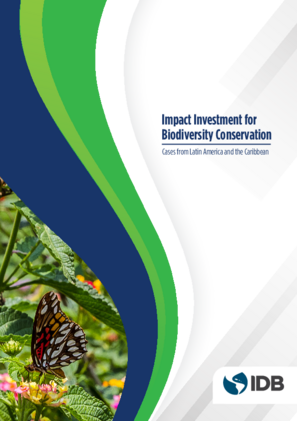Impact Investment for Biodiversity Conservation: Cases from Latin America and the Caribbean
Date issued
Jan 2021
Subject
Natural Capital;
Private Investment;
Biodiversity Conservation;
Blended Finance;
Development Bank;
Ecosystem Service;
Green Bond;
Forest and Forestry;
Impact Investing;
Forest Conservation
JEL code
Q54 - Climate • Natural Disasters and Their Management • Global Warming;
Q56 - Environment and Development • Environment and Trade • Sustainability • Environmental Accounts and Accounting • Environmental Equity • Population Growth;
Q55 - Technological Innovation;
Q57 - Ecological Economics: Ecosystem Services • Biodiversity Conservation • Bioeconomics • Industrial Ecology
Category
Monographs
More than 30% of the earths available freshwater and almost 50% of the worlds tropical forests are found in the Latin America and Caribbean (LAC) region and possesses a vast array of terrestrial, freshwater, coastal, and marine ecosystems. This unique source of capital -- natural capital -- generates important life-supporting benefits for people called ecosystem services. The term “natural capital” refers to the terrestrial and marine ecosystem components, including biodiversity, that contribute to the generation of valuable goods and services for humankind now and in the future. A shortfall in funding to protecting natures assets and biodiversity can be partially addressed through mobilization of private investment by supporting private actors that are sustainably leveraging natural capital, facilitating private investment in conservation and restoration projects, and fostering private innovation in sustainability solutions. This report characterizes and evaluates the performance of innovative finance approaches in LAC including blended finance, green bonds, payment for ecosystem services (PES), capital markets solutions, habitat banks, direct equity and pooled funds, and accelerators. As countries seek to reach their commitments under the Convention on Biological Diversity, the Paris Climate Accord, and Sustainable Development Goals 14 and 15, innovative finance could become an essential complement to public finance and a catalyzer to achieve those commitments through the sustainable use of nature, while ensuring local livelihoods and a more inclusive development.
Generative AI enabled




